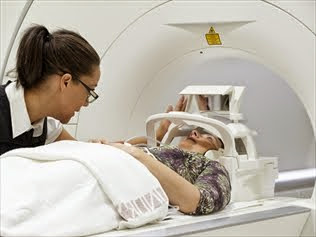I am happy to introduce my new series, Hug your Cushie. Life as a Cushie is rough. You see it happen to your loved one or friend. You drive them there. You are there for the lab results and surgeries. Yet, you don't really experience the difficulties first hand. I want a way to show caregivers just some of what we experience. What if this were you?
This is not a "woe is us" series. This is a "warriors keep going no matter what series." It is important that caregivers and friends understand this, I mean, really understand the toll this takes on a patient. I hope that after being a Cushie for a few moments that you understand the physical and emotional challenges we face. Be sure to Hug your Cushie today.
Hug your Cushie: What is getting an MRI like?
I found this informational video intended for patients who need to undergo an MRI.
------------------------------
I patiently watched that video. It all sounds pretty doable. Pleasant even! Well, why do I associate this machine with a torture chamber?
I have been getting MRIs every six months for seven years now. I used to convince myself that it was no big deal. It was, after all, just what had to happen as a patient with pituitary tumors.
Stoic. I'm always trying to be stoic.
The last time I went for my pituitary MRI with dynamic protocol, I asked my dear friend Melony to tag along as "moms play date." I promised her dinner afterwards, but one condition: she could not make me laugh in there. Melony held on to my leg the whole time. At the end, she asked, in tears, how I can stay so strong every time? I told her that I really am not! I hate that machine! I hate the noises! I hate the head contraption that keeps my neck from moving. I hate lying in a tube where my whole body is touching the bottom and sides of the tube, with only four inches of space between my chest and the top of the MRI tube. I hate MRIs. There. I said it.
I don't have to be brave and mask all the challenges of being a patient. However, I will continue to get MRIs, as my treatment plan requires me to do, for the rest of my life. I will always look forward to getting out of those tubes and on to more magical sounds.
Some awesome person recorded the sounds of an MRI for 35 minutes. Click below, lean way into your speakers, even put your ear right on the speaker. Then stay put. See how long you can stay there before you pull away from the clicking and hammering sounds. Then remember, we Cushing's patients can not stop and move the noise. We have to float our minds off to a special place where we joyfully pass each minute in peace and quiet.
-----------
If you like what you see here, share the blog. Please do not lift links or images then share them. Blog authors spend time away from family, time when they are sick, to make these posts. Hug a Blogger. 😊






